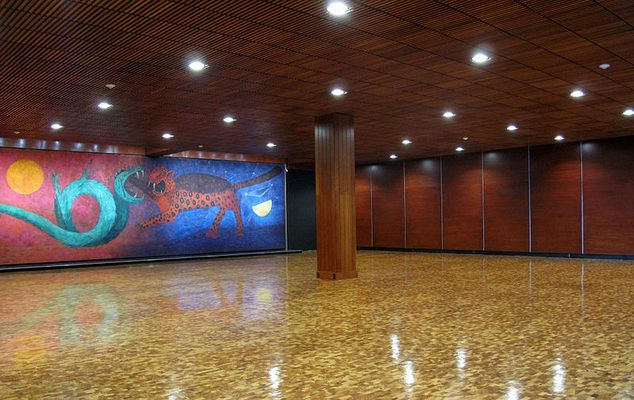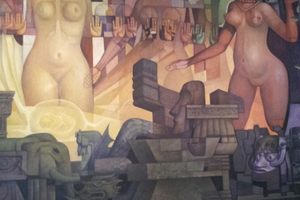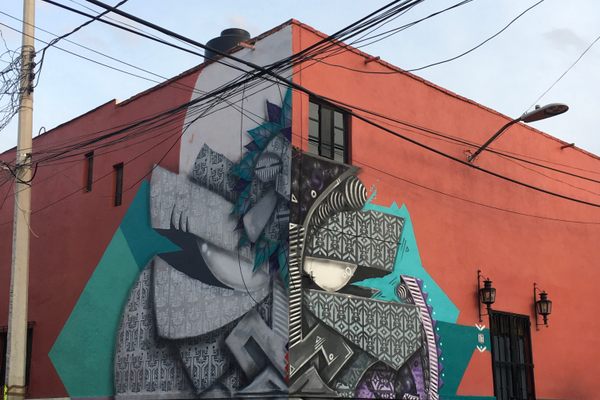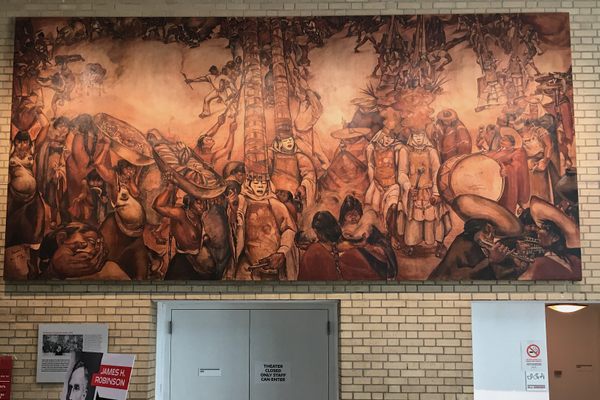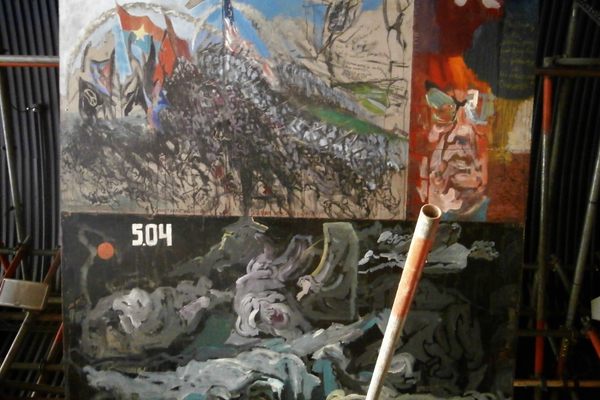About
Displayed in the entrance hall of the National Museum of Anthropology in Mexico City, this immense mural confronts the observant visitor with the depiction of a fierce fight between a snarling jaguar and a hissing serpent. The battling beasts represent the Aztec concept of the perennial duality of life and death, day and night, creation and destruction.
The mural often goes unnoticed by visitors eager to see the archaeological treasures of the museum, but it's worth pausing a moment to contemplate this enigmatic art piece. Created in 1964 by the Mexican artist Rufino Tamayo for the opening of the museum, the mural is known simply as "Dualidad" ("Duality"), drawing on the rich mythology of the Aztecs and modern Mexican folklore.
The jaguar represents darkness and the bellicose god of the night and human sacrifice, Tezcatlipoca. The adversary of the big cat is a plumed serpent, representing light and day. It symbolizes the venerable god of knowledge and creator of mankind, Quetzalcoatl. Celestial elements such as the Moon, the Sun, and constellations can be seen that reflect the cosmos, and contrasting colors create an eerie ambiance meant to represent the dawn and twilight. This was a symbolic time, during which the ancient peoples of Mexico believed the cosmic battle between day and night was fought.
In Aztec mythology, Quetzalcoatl and Tezcatlipoca were brothers and divine opposites who presided over the successive cycles of creation and destruction of the universe. The two were engaged in a constant and bloodthirsty sibling rivalry for cosmic supremacy, a rivalry that was believed to be the reason for the phenomena of night and day. Both gods were associated with animal counterparts. The jaguar because of its nocturnal behavior and spotted coat believed to resemble the night sky was linked with Tezcatlipoca the god of the night, whereas the snake and its association with the daytime and the sun represented the life-giver and creator of humankind.
Related Tags
Know Before You Go
For those interested in seeing more of Tamayo's artwork, the brilliant Museo de Rufino Tamayo is directly opposite the anthropology museum within a 10-minute walking distance.
NEW - Yucatan: Astronomy, Pyramids & Mayan Legends
Mayan legends, ancient craters, lost cities, and stunning constellations.
Book NowPublished
September 11, 2018

